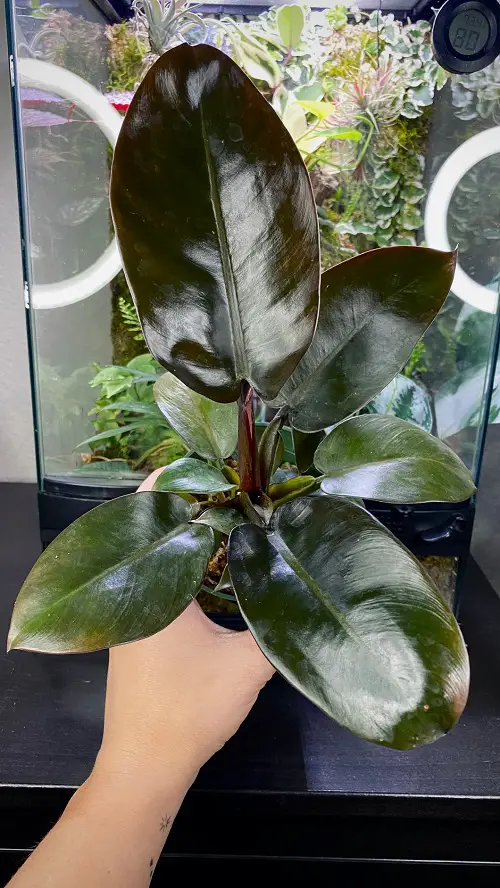Philodendron Black Cardinal can be a star plant in your house with its dark and deep foliage! Here are all the details to grow it!

Although several varieties of the stunning Philodendron species exist, the Philodendron Black Cardinal stands out the most with its glossy and dark foliage! Let’s look at how to maintain it in all its glory!
Check out our guide on how to grow Philodendron gloriosum here
Philodendron Black Cardinal Information
This plant is usually referred to as the Blushing Philodendron after the red-leaf philodendron. It is best known for its beautiful foliage, mainly when the plant is young. It grows slowly, reaching about 2-4 feet in height, making it perfect for living rooms. Just make sure it gets plenty of bright but indirect light.
Find some Stunning Philodendron Varieties here
Propagating Philodendron Black Cardinal
You can easily propagate Philodendron Black Cardinal by cuttings or air layering. For best results, propagate the plant in spring or summer. It will form new growth within 2-4 weeks.
Requirements for Growing Philodendron Black Cardinal

Light
The black and glossy sheen of the leaves will be more pronounced if you keep the plant in the mild morning sun for 2-3 hours.
Give it plenty of bright but indirect light for most of the day. Avoid exposing it directly to the afternoon sun for long hours, as it will burn the foliage.
Soil
Philodendron Black Cardinal will grow best in well-draining soil rich in organic matter. Amend the growing medium with compost and coco peat. Also, adding a bit of perlite will help in drainage.
Water
To make sure the delicate and black foliage looks best all the time, avoid overwatering the plant as it can lead to root rot. Water when the topsoil feels a little dry to the touch.
Temperature
Philodendron Black Cardinal thrives in the temperature range of 64-86°F or 18-30°C. Avoid exposing it to temperatures lower than 50F (10C).
Also, keep it away from A/C or heating vents when growing indoors.
Philodendron Black Cardinal Care

Fertilizer
Philodendron Black Cardinal is a slow-growing plant, so you don’t have to fertilize it quite often. The dosage is more important than the duration.
Feed the plant with a balanced liquid fertlizer, diluted to 1/4 of its strength, once in 6-8 weeks. Avoid feeding the plant in winter.
Pests and Diseases
Be careful of Spider mites, mealybugs, whiteflies, and scale bugs. Use insecticidal soap to get rid of them. Keeping the foliage dry and saving the plant from overwatering will keep it free of diseases.


